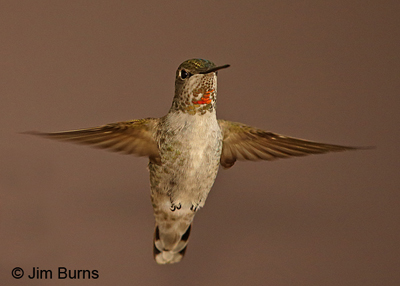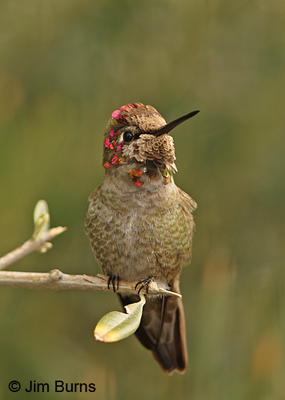
If you’re into hummingbirds but don’t have George West’s delightful little book, Do Hummingbirds Hum?, then you need to find it. In my signed copy George called it light reading, but though there is no scientific or biological research jargon, it is chock full of facts and figures which answer all the questions non-ornithologists could imagine regarding these bright, tiny gems of the Southwest. Unfortunately Dr. West passed away last fall, but his book serves as a wonderful tribute to the man and the beloved avian family that he spent years banding and studying.
The history of hummers in our yard, going on fourteen years now, is interesting but ultimately rather disappointing. We have five feeders out, three of them inches from windows in the three most used rooms in the house--desktop computer (me), laptop (Deva), kitchen sink (both of us), so there is a lot of observation potential. We always have Anna’s around, typically seeing multiple males simultaneously, especially in fall and during winter nesting season when they “guard” a feeder, and typically seeing multiple females simultaneously throughout spring and summer.
The disappointment stems from three things: we have never found a nest; we have five species besides Anna’s on our yard list, but have recorded each of these other five only one time, none an unexpected vagrant or rarity; during the dog days of two different summers we have found several dead hummingbirds in the yard, most of them young of the year, their deaths assumed to be heat related.
Now, as these two new neighbors hover before my face, I begin counting off the seconds, partly out of curiosity and partly thinking it will help me hold my focus on not moving. They begin moving, though, about when I reach ten. They dart closer (remember, they started at six inches!), then drift back. I’m not too worried, but I do think about my eyes. Next they turn and air dance with one another. Then they helicopter upward just to the top of my vision, but soon return to eye level.
I’m at twenty seconds. The most surprising thing is that they have shown no antagonism toward one another. Perhaps they are siblings. Thirty seconds. They move in tandem, left then right, still intently checking me out, smile still frozen on my face. I think about my eyes again and then remember I have lifted my sunglasses. They are perched, not on top of my head, but above my eyebrows below my hairline. Convenient, but not a good look. Maybe the hummers don’t think so either.
At forty-five seconds it dawns on me my sunglasses are tinted a light shade of red. Perhaps the young Anna’s have been attracted by the color, and the length of their inspection is fueled by their lack of experience. Finally they peel off, one to the Russian Olive over the fountain, the other to the Sweet Memories behind my shoulder. One minute and ten seconds! My rose-colored birder’s take on this encounter is they are just introducing themselves around the neighborhood.
* * * * *
Check out this link to see some cool Anna’s Hummingbird images. http://jimburnsphotos.com/pages/annashummingbird.html